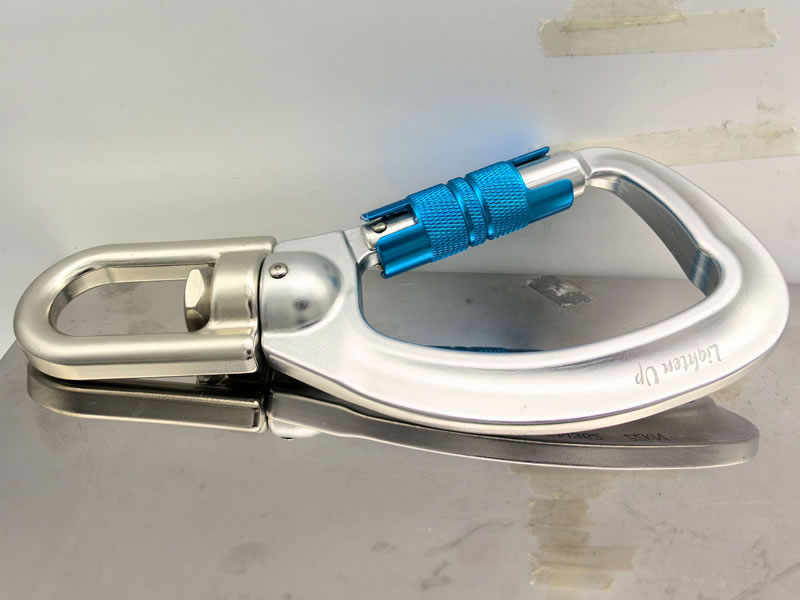What is a swivel carabiner used for in climbing?
For climbers battling tangled ropes, twisted quickdraws, and frustrating friction at belay stations, the swivel carabiner is an ingenious solution. Its core purpose? To eliminate dangerous and inefficient twists in your climbing system by allowing connected components to rotate freely.

Unlike standard carabiners with a fixed orientation, a swivel carabiner features a rotating joint integrated into its spine. This simple yet critical mechanism tackles several common climbing challenges:
- Preventing Rope Drag & Tangles: When clipped directly to the rope (e.g., at a belay device or guide mode setup), a swivel allows the rope to spin naturally as the leader climbs or the follower cleans. This drastically reduces twisting force transmitted down the rope, preventing kinks, tangles, and excessive drag that can hinder movement and safety.
- Stopping Quickdraw "Corkscrewing": Attaching a swivel to the rope-end of a quickdraw lets the draw rotate freely as the rope runs through it during a lead fall or while climbing. This prevents the draw from twisting sideways ("corkscrewing"), which can cause gate flutter, accidental unclipping, or place the carabiner in a dangerous cross-loaded position.
- Managing Gear at Belay Stations: At crowded anchor points, connecting your personal tether or belay device with a swivel allows you to move around smoothly without twisting slings, lanyards, or the rope itself. This reduces wear on gear, prevents tripping hazards from tangled lines, and makes managing multiple ropes far easier.
- Reducing Wear on Gear: Constant twisting forces accelerate wear on carabiner gates, ropes, and slings. By allowing free rotation, swivels minimize this abrasive stress, extending the lifespan of your equipment.
- Improving Efficiency: Less time spent untangling ropes or wrestling with twisted gear means more time focused on climbing safely and efficiently, especially crucial on complex multi-pitch routes or during transitions.
When Should You Use One (and When Not)?
- Ideal Uses: Belay devices (especially auto-locking/guide mode), personal tethers/PAS systems, the rope-end carabiner in quickdraws for very wandering routes, fixed rope management, haul systems, anywhere significant twisting occurs.
- Considerations: Swivel carabiners are typically stronger along their major axis (like standard carabiners) but weaker in minor axis or cross-loaded scenarios. Always check manufacturer ratings (marked kN). They are also heavier and more expensive than standard carabiners. Avoid using them where rotation isn't needed (like most gear placements on the racking carabiner of a quickdraw) to save weight.
The Bottom Line:
A swivel carabiner isn't essential for every single climb, but it's a highly valuable tool for solving specific friction and twisting problems. By enabling free rotation, it enhances rope management, reduces gear wear, minimizes dangerous cross-loading potential, and ultimately contributes to a smoother, safer, and more efficient climbing experience, particularly at belays and on routes prone to rope spin. Choose one with appropriate strengt






